What a month it has been. When one gets older, yes, you will too, life often naturally slows down as a preparation for retirement. Not in my case however, I am busier than I have been in a long time!
So, an overview of what happened this month so you understand why I had little time to write a new blogpost.
First, I started coaching again. I was asked by a young female sprinter, to coach her and I found her of such potential that I decided to put new batteries in the stopwatch that I put in in the closet 13 years ago. (I even wrote a tribute to my stopwatch for a temporary Olympic exhibition in Holland during the 2016 Olympics in Rio, thinking I wouldn’t need it again) For my Dutch blogreaders:
Stopwatch Huis van de Topcoach
Your question is obvious: why? My counter question: why not? But seriously, I think I am a better coach now than when I quit in 2004 and I had 13 years to read, study, research and experiment and giving me more knowledge than I had before. And somehow I find some athletes deserve this. We‘ll see, it won’t be easy, but then….. it never is.
Peter Joosten, of Project LIFE, a very smart and ambitious young man who is fully in touch with the latest technologies, biohacks, quantified self, etc. asked me contribute with a podcast. Peter is always at the edge of the latest developments in these fields shares this informatiion with a larger audience. It was about the role of complexity and technology in sports training, more of a fundamental view.
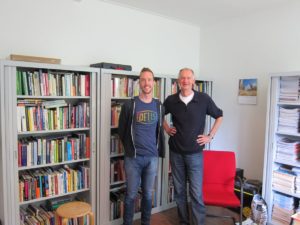
For my Dutch readers, here is the link for the podcast, in Dutch:
https://www.projectleven.nl/henk-kraaijenhof/
A new book came out: the “Handbook for Kickbox Coaches”, written by my good friend Erik Hein, and I am proud to have contributed a chapter. Holland has a good history in martial arts and kickboxing, but their training methods are often based on old- fashioned ideas, misconceptions and lack of knowledge of modern insights in exercise physiology or motor learning. Erik, being one of the main educators in martial arts in Holland, brings them up to date real quick with state-of-the-art knowledge, during his lectures and with this book. A job well-done!
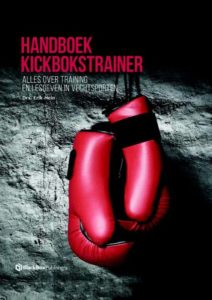
It doesn’t stop: another good friend, Fergus Connolly, recently published his experience and knowledge in a beautiful book: “Gamechanger” an appropriate name, since after reading this book, one will never look at team sports like one did before reading it. He gives the right place to sport sciences within the context of elite team sports, tapping into a vast amount of resources, knowledge and experience as sports scientist attached to very good teams in different team sports, like rugby (Welsh Rugby Union), NFL (San Francisco 49ers) and even Gaelic football. A must-have for S&C coaches!
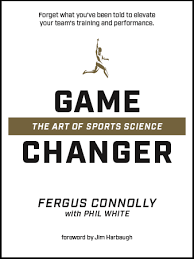
Our seminar surpassed my best expectations, the quality of the presentations as well as the quality of the audience was great. I am really proud of it. This time I did not speak myself, in order to give more time for the invited speakers and that was a good choice, since the day was packed with new and interesting information and I learned a lot. It will be hard to find this necessary kind and this level of information for coaches in Holland, since the coaches education, especially at the highest level, is completely insufficient and no as good as it was e.g. 30 years ago. It’s a shame, since I think elite coaches deserve to get adequate education that prepares them and their athletes to train and to compete more succesfully.
Bill Laich first talked about the muscle biopsy procedure, the differentiation of muscle fiber types and its relevance for training. His presentations are always very methodically, step-by-step, but dispersed with practical examples of elite athletes and anecdotes. It is his great strength to make very complex issue comprehensible for everybody in the audience. And you always feel there is much more depth in his knowledge about the topics he speaks about.
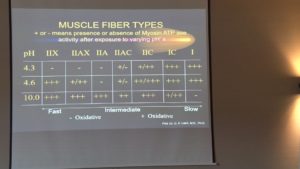

In the afternoon Bill spoke about the structure and importance (and the complexity) of the “core cylinder”. He unravelled the muscles involved and how they work in order to connect the forces between upper and lower body. Food for thought for many of us.
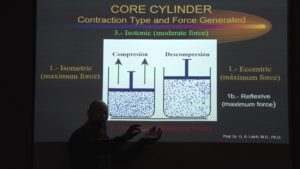
Robert Heiduk explained the benefits of KAATSU, an addition to training, in order to enhance the effect of training and rehab, of Japanse origin. Robert has several years of experience with this concept and explained that and why KAATSU is not the same as blood flow restricted training and that just wrapping a belt around a limb is not adequate for getting the right training effects. This concept has many advantages for training, rehab, but also for recovery, for warming up and for clinical uses. It is used superimposed on regular and light exercises and has therefore an ignorable risk of injury.

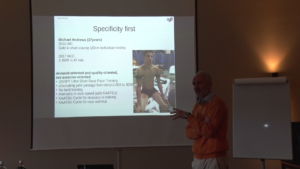
Joe Dolcetti, developed the concept of “wearable resistance” and pointed out that this is the most specific form of strength training, giving the athlete extra external load, thus increasing strength, but the extent that it does not interfere with the technique or disrupts the motor pattern. This creates and excellent level of transfer from exercise to competition movement and it is applicable to any sport.
We started experimenting with it immediately.

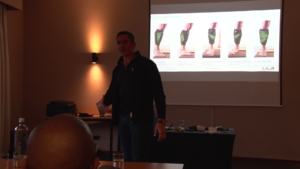
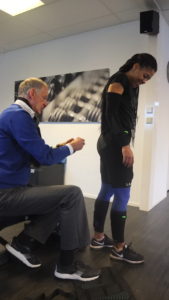
Erik Hein, see above, took us on the way of the peaceful warrior and pointing out three important pillars of becoming a peaceful warrior, (remembereing that competitive sports is a conflict model, a zero-sum gain – my win is your loss) These there pillars are competence, autonomy and connection. He also lead us along the important issues of motor learning and transfer, and compared a traditional approach to a tactical approach for these issues.

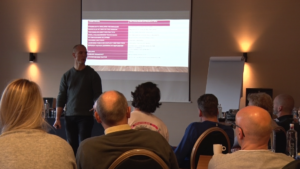
Summing up: from the feedback we got it was a great seminar and I already have a date for the next one: March 24, 2018. In the meanwhile these presentations will be available by video-on-demand on this blog. Be prepared to listen to presenters and topics beyond „the usual suspects“.
